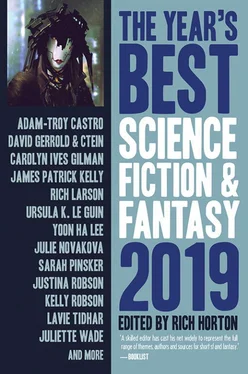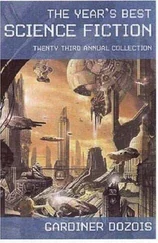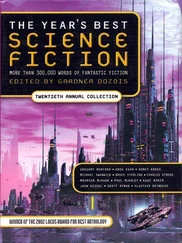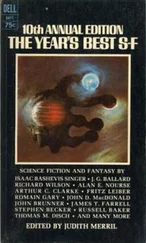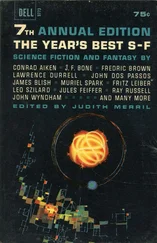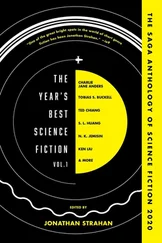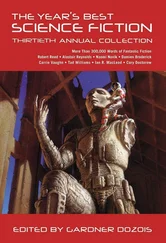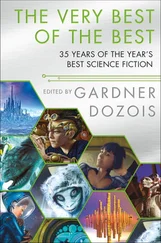THE YEAR’S BEST SCIENCE FICTION & FANTASY:
2019 EDITION
Edited by Rich Horton
To my son-in-law Joshua Whitman
and my daughter-in-law Patricia Clarey Horton.
Where to Find the Great SF & Fantasy short fiction?
Rich Horton
The State of the Art
There are a lot of Best of the Year volumes in our field, and frankly I recommend them all. One of the features of SF in 2018 is how much of it there is. There’s enough short fiction that the Hugo shortlist can very nearly ignore men, and still be mostly full of strong stories. (There are a couple of duds, but so it always was.) There’s enough that both the Hugo and Nebula shortlists can completely ignore the traditional print SF magazines ( F&SF , Asimov’s , Analog , and Interzone , let’s say), and still be mostly full of strong stories. How then to resolve that issue? Read as many of the Best of the Year volumes as you can, I say! (And, hey, why not subscribe to one of the print magazines, if that’s possible? And try some original anthologies as well.)
The main distinction, of course, for each of these books is the editor’s individual tastes. (Or so Hannibal Lecter tells us…) We all read a lot of short SF, and have for a long time. And when I see the table of content pages of the other books they are stuffed with stories I almost took for this book (and a couple of overlaps)—so I know that my fellow editors have good taste! Thus part of the equation is: which editor’s taste aligns with yours? But, I’d suggest, if you can, read more—because reading stuff that you didn’t know you’d like is one of the truest joys of reading.
If I think my book is the best—and I do!—it’s for the obvious reason that my personal taste aligns pretty closely with the editor’s! But that said, I am abashed year after year to realize that Jonathan or Ellen or Neil or one of the other editors, (or, sigh, Gardner!), has chosen a gem or two I really should have taken myself.
But to return to the wealth of good fiction in the field, let’s take a closer look at the venues in which to find it. I’ve already expressed a wish for more attention to be paid to the print magazines, so I’ll start there. The oldest magazines in the field are Weird Tales , first published in 1923, and Amazing Stories , first published in 1926. Both have undergone numerous deaths and resurrections over the decades. Weird Tales ’ last issue appeared in 2014, but rumors of another resurrection have surfaced. More happily, Amazing Stories was revived by publisher Steve Davidson in 2018, and what I’ve seen so far is promising—and I very nearly took Kameron Hurley’s “Sister Solveig and Mr. Denial” for this volume.
Then there is Analog , known for an emphasis on “hard SF,” founded in 1930 as Astounding Stories , and published continuously since that time. Trevor Quachri is the current editor, and I’ve liked his work with the magazine—this year we feature two stories from them, each from one of the best of their regular contributors: Alec Nevala-Lee’s “The Spires”, and Adam-Troy Castro’s “The Unnecessary Parts of the Story.” (And no, despite the fact that a previous Analog story in these pages was by Alvaro Zinos-Amaro, it’s not true that a first name starting with A and a hyphenation are requirements for Analog publication.) The Magazine of Fantasy and Science Fiction , which dates to 1949, has, as its title implies, shows long featured a roughly 50/50 split between those two modes. The editor is C. C. Finlay, and this year we have chosen a remarkable bit of cold-blooded SF horror, “The Donner Party” by Dale Bailey.
More recent but still venerable magazines include Asimov’s Science Fiction (founded 1976, now edited by Sheila Williams) and the leading UK magazine, Interzone (founded 1982, now edited by Andy Cox.) Asimov’s (like Analog and F&SF) remains hospitable to novellas, and this year we taken from there a very exciting and very long story, “Bubble and Squeak” by David Gerrold & Ctein; as well as “The Gift” by Julia Nováková. From Interzone I came very close to choosing Ryan Row’s “Superbright” and Samantha Murray’s “Singles’ Day.”
It would be fair to say that most of the magazines in the field founded more recently are online, but there are exceptions. Perhaps most remarkable of these is Lady Churchill’s Rosebud Wristlet , a modestly produced—but always attractive—saddle-stapled magazine from Gavin Grant and Kelly Link’s wonderful Small Beer Press. Thirty-nine issues have appeared since 1996, and the fiction is always lively and original, as evidenced by the two very different stories we chose for this volume: “Lime and the One Human” by S. Woodson, and “Dayenu” by James Sallis. Even more recent is Fireside Magazine , which is a sort of hybrid of electronic and print publication—it began in 2012 as a print magazine, and now, under editor Julia Rios, publishes regular electronic issues and quarterly print issues. I don’t know to what extent the contents are the same, but I do know they publish some outstanding stuff, including Beth Goder’s “How to Identify an Alien Shark” in this book, and P. Djeli Clark’s Nebula and Hugo nominee “The Secret Lives of the Nine Negro Teeth of George Washington.” In this context I ought also to mention Galaxy’s Edge , which has been producing regular bimonthly issues since 2013. From 2018, I thought Gregory Benford’s “A Waltz in Eternity” particularly strong—another story that came within a whisker of appearing here.
Not all the magazines I canvas for stories are SF magazines—you can find wonderful fantastical stories in the traditional “little” magazines, and in wide circulation places like The New Yorker . From there, I’d have liked to use Karen Russell’s “Orange World.” From the Paris Review , I’m thrilled to have one of the late great Ursula K. Le Guin’s last stories, “Firelight”, and from the Stonecoast Review I’m likewise delighted to be able to reprint Rick Wilber’s “Today is Today.” I also saw super stuff from Jess Row in Granta , from Gregory Norman Bossert and many others in Conjunctions , and strong work from Josh Pearce and M. C. Williams in a slim magazine I’m not sure how to characterize, Bourbon Penn .
Original anthologies have been an important source of new short fiction since at least Frederik Pohl’s Star Science Fictionin the 1950s, and that remains true today. Perhaps the single best anthologist now—along with Ellen Datlow—is Jonathan Strahan, and in 2018 he concluded a brilliant series of anthologies, the Infinity Series, with Infinity’s End, which gave me two stories in the book, by Justina Robson and Kelly Robson (no relation, and the stories are “Foxy and Tiggs” and “Intervention”) and I could have taken two or three more easily. It’s more common these days to see themed anthologies, and this year I took stories from Robots Vs. Fairies(Lavie Tidhar’s “The Buried Giant”) and Aurum, an anniversary anthology of sorts from the Australian publisher Ticonderoga (“Beautiful” by Judith Marillier). Other anthologies of particular note include the latest in the ongoing series of near future-oriented stories from MIT Technology Review’s publishing arm, Twelve Tomorrows, as well as Shades Within Us, Mothers of Invention, Speculative Japan 4(a selection of fantastical work from Japan), and what might be, alas, Gardner Dozois’ last anthology, The Book of Magic.
Читать дальше
